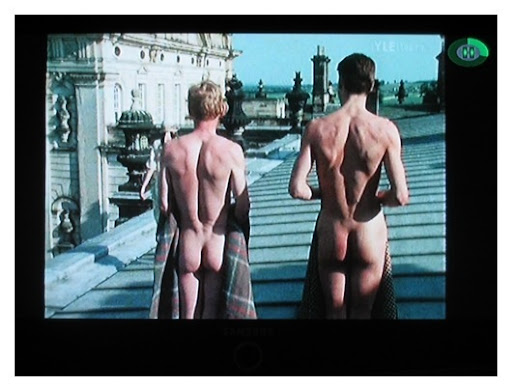| The Scarlet Pimpernel in disguise. |
The Scarlet Pimpernel seems to lay the template for a sub-genre of romance called the Regency novel, which is traditionally set between 1800 and 1820 and plays off the conventions of Jane Austen's books. The romances take place against the backdrop of the lives of the upper class--the bon ton. Balls, banquets, horse-action, spying. Extreme propriety of manners. See the bulleted list in the Wikipedia entry for Regency romance for a more complete list of typical features: http://en.wikipedia.org/wiki/Regency_romance. The article does not mention Baroness Orczy as an early Regency writer, and this book is set in 1792--a bit early for the Regency period. I think a good case could be made, however, for including her in the genesis of the genre.
| Anthony Andrews as the Scarlet Pimpernel (1982) |
| Leslie Howard (Ashley Wilkes) as the Scarlet Pimpernel (1934) |
My reading of this book was greatly enhanced by the large amount of 19th century literature I have read from my children's literature list. Austen, Dickens, Dumas. Even Twain! Each of them brought me new understanding and historical perspective on the period during and immediately after the French Revolution. My general knowledge of history and literature has continued to grow, which is a nice thing. I brought a lot more to the book this time than when I read it in my early twenties.
I recommend this book for a bit of fun. Not all reading has to be serious, socially relevant, or challenging. And go ahead, Netflix the 1934 and 1982 movies. You won't regret it.
Sidebar: The Scarlet Pimpernel (flower)
Sidebar: Anthony Andrews
| Jeremy Irons (left) and Anthony Andrews (right) in the BBC production of Brideshead Revisited |

No comments:
Post a Comment